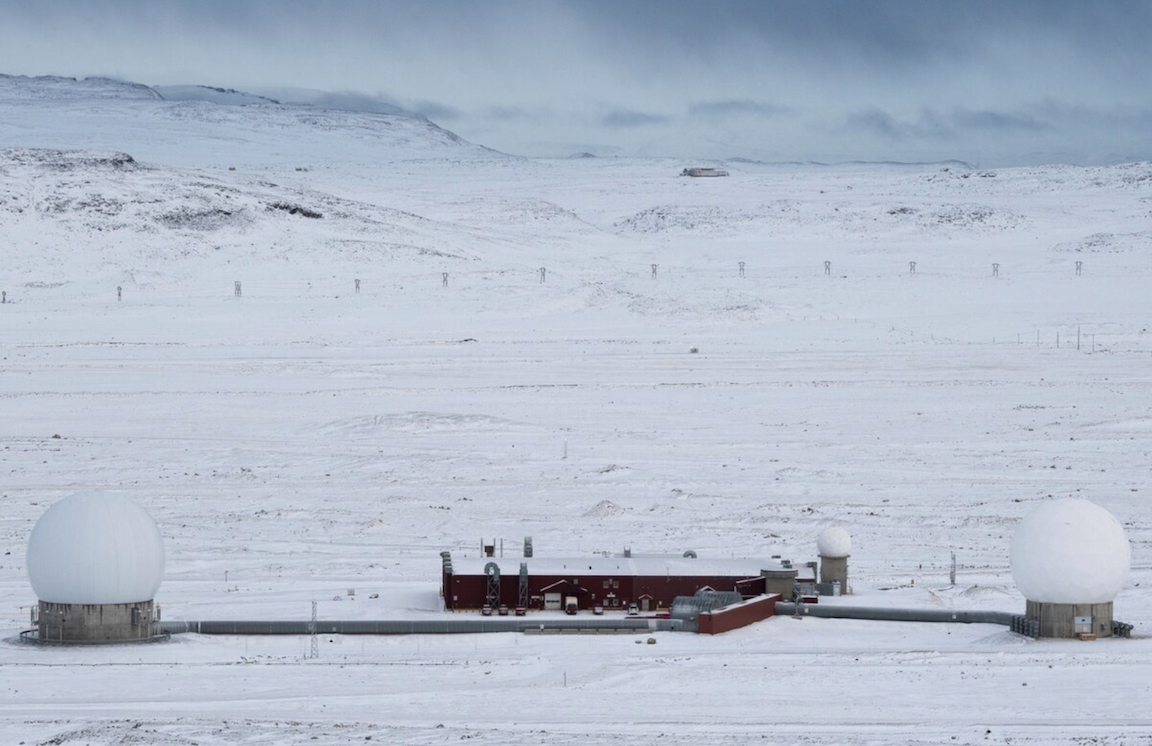
The 23rd Space Operations Squadron, Det. 1 is located more than 700 miles north of the Arctic Circle. The detachment is the northernmost U.S. Air Force Satellite Control Network site and is responsible for collecting data and pushing commands to satellites. (Jonathan Whitely/U.S. Air Force)
The U.S. Defense Department relies on a mixture of military and commercial satellites to connect its war fighters all over the world. And while users can complain that terminals are too bulky or that they should have the roaming capability exhibited in commercial cellphone technology, the system largely works.
But that’s not the case in the Arctic.
“Very simple things become hard when you’re in the Arctic, not the least of which is communication. When you are above about 65 degrees north, satellite communication starts to diminish, and above about 70 degrees north it becomes extremely limited except for some of our more exquisite capability — submarines, for example,” said U.S. Northern Command spokesman Maj. Mark Lazane.
The U.S. Space Force’s primary communications satellite system, Wideband Global SATCOM, is designed to provide connectivity between 70 degrees north and 65 degrees south — basically to the edge of the polar region.
The Space Force also operates two Enhanced Polar System satellites — the Arctic complement to the Advanced Extremely High Frequency constellation. EPS satellites provide highly secure, anti-jamming signals, and like its counterpart, EPS is built for high-priority military communications, like that used with submarines.
And while elsewhere in the world the military supplements its purpose-built systems with commercial communications satellites, that option is limited in the Arctic. After all, commercial satellites providing coverage of other areas aren’t solely serving the military, and the services rely on commercial consumers to offset the costs of designing, building, launching and maintaining a satellite. But there’s far less commercial demand for satellite communications in the Arctic than in more populated areas, and commercial satellite coverage reflects that.
That leaves U.S. Northern Command with a significant gap in the connections available to its war fighters and platforms.
“Connection capabilities [in the Arctic] are limited and lack resiliency. We’re challenged in areas from basic point-to-point connections to communication with our distributed sensors,” Lazane said. “Having a reliable broadband communications capability for Arctic operations is the top unfunded priority of USNORTHCOM. With the increase of great power competition in the Arctic, there is a need for additional communications capability and capacity.”
But the command thinks it’s found a solution in the form of new, proliferated commercial constellations. Private companies OneWeb and SpaceX have launched hundreds of satellites into low-Earth orbit in an effort to provide competitive broadband to users all around the world.
USNORTHCOM is asking Congress for $130 million to explore OneWeb’s and SpaceX’s capabilities in order to provide reliable and potentially cost-effective connectivity to Arctic platforms, installations and war fighters.
“Leveraging emerging proliferated low-Earth orbit commercial SATCOM providers in the Arctic enables the United States (and our allies) the opportunity to scale communications capability and capacity quickly in a cost-effective manner,” Lazane said. “The unique capabilities provided by PLEO [proliferated low-Earth orbit] commercial SATCOM providers in the Arctic enables access to high-bandwidth, low-latency communications capability and capacity.”
In a February 11 letter to Congress, USNORTHCOM Commander Gen. Terrence O’Shaughnessy said that funding for this effort was his No. 1 unfunded priority. If approved, the $130 million in funding will be used for polar communications experiments as well as the fielding of prototype terminals that can connect to commercial PLEO constellations.
If those experiments prove successful, USNORTHCOM would need another $110 million in fiscal 2022 for full coverage.
SpaceX has stated that its Starlink constellation will begin offering broadband services this year, and USNORTHCOM is hopeful that could enable early Arctic capability by the end of the year.

